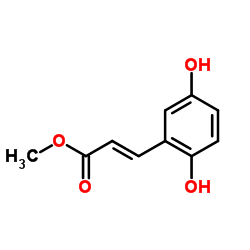Signal pathways that transduce growth factor-stimulated mitogenesis in bone cells.
J Sandy, M Davies, S Prime, R Farndale
文献索引:Bone 23(1) , 17-26, (1998)
全文:HTML全文
摘要
This investigation examined which signal pathways are of relevance in growth factor-stimulated bone cell mitogenesis. Platelet-derived growth factor (PDGF) and insulin-like growth factor-II (IGF-II) were potent mitogens for both the MG-63 osteoblast cell line and for primary cultures of human osteoblasts (HObs). The mitogenic action of both IGF-II and PDGF was attenuated by pertussis toxin (Ptx), by indomethacin, and by the lipoxygenase inhibitors BW755C74 and BW4AC. A combination of Ptx and indomethacin caused much greater inhibition but failed to abolish mitogenesis completely. PDGF significantly elevated inositol phosphates levels in both cell types; IGF-II had no effect on this pathway. In MG-63 cells, we demonstrated tyrosine phosphorylation of high-molecular-weight substrates elicited by both PDGF and IGF-II. Genistein inhibited the phosphorylation and mitogenic response to PDGF, but had no effect on IGF-II-induced tyrosine phosphorylation or mitogenesis. Another inhibitor of tyrosine kinases, methyl 2,5-dihydroxycinnamate, (MDHC), inhibited PDGF-stimulated mitogenesis effectively in both cell types but only blocked IGF-II-induced mitogenesis in MG-63 cells. The specificity of these inhibitors suggests that particular tyrosine kinases may regulate growth factor-induced stimulation of bone cells.
相关化合物
| 结构式 | 名称/CAS号 | 分子式 | 全部文献 |
|---|---|---|---|
 |
2,5-二羟基肉桂酸甲酯
CAS:63177-57-1 |
C10H10O4 |
|
Direct inhibition of the hexose transporter GLUT1 by tyrosin...
2001-01-23 [Biochemistry 40(3) , 777-90, (2001)] |
|
Mechanism of topoisomerase II inhibition by staurosporine an...
1996-10-18 [J. Biol. Chem. 271(42) , 26418-23, (1996)] |
|
Suppression of tyrosine kinase activity inhibits [3H]thymidi...
1997-07-01 [J. Clin. Endocrinol. Metab. 82(7) , 2143-7, (1997)] |
|
Regulation of the renal Na-HCO3 cotransporter: IX. Modulatio...
1998-10-16 [Regul. Pept. 77(1-3) , 155-61, (1998)] |
|
Tyrosine kinase inhibitor, methyl 2,5-dihydromethylcinnimate...
2007-08-01 [Exp. Cell Res. 313(13) , 2753-65, (2007)] |